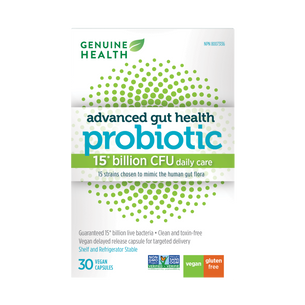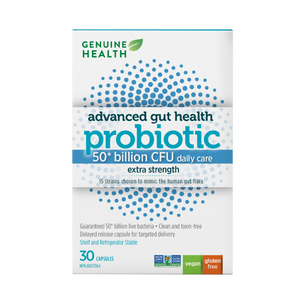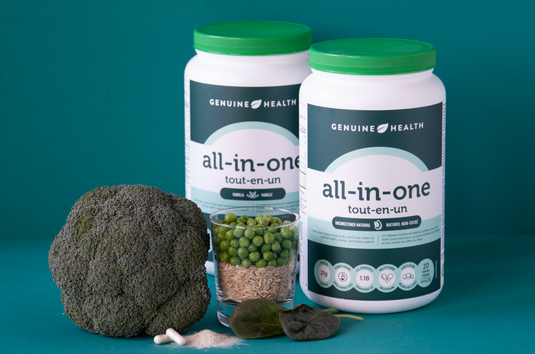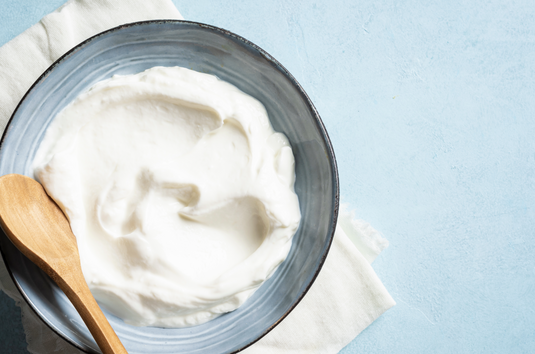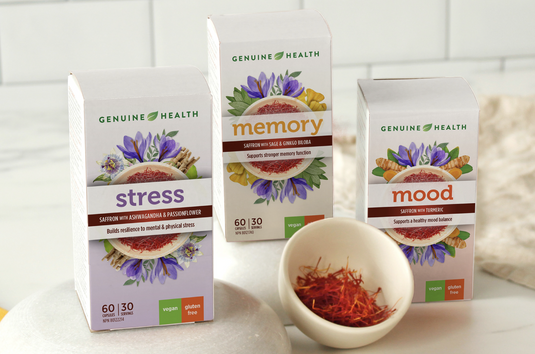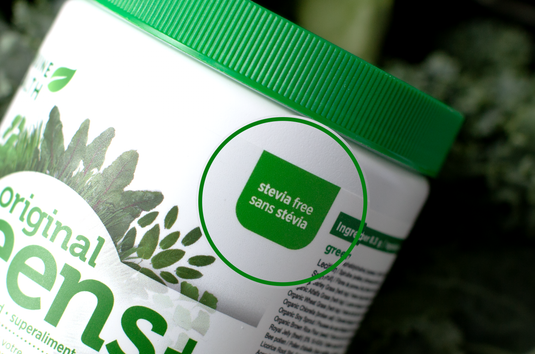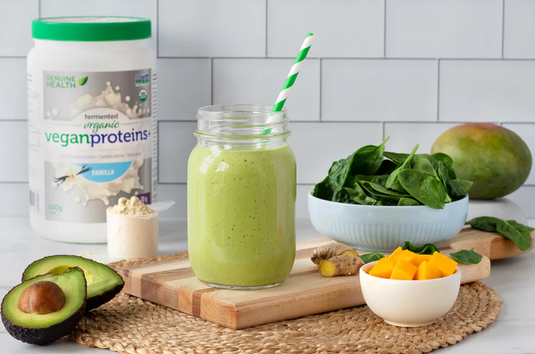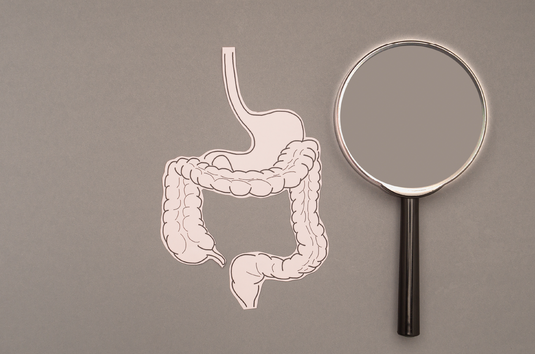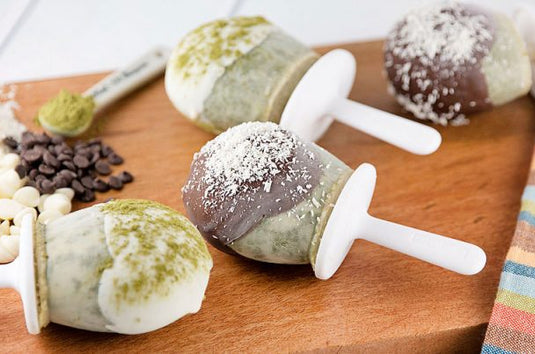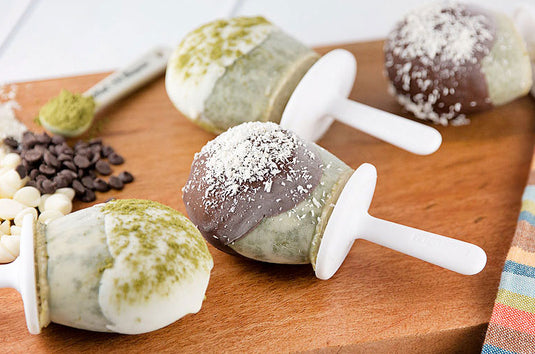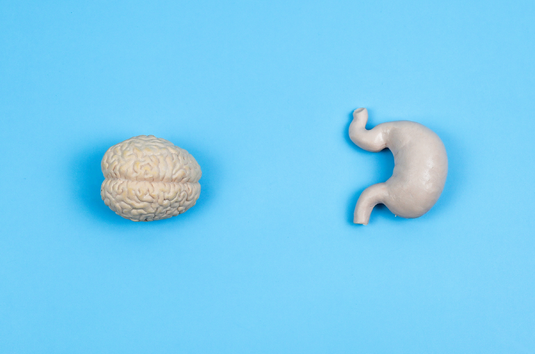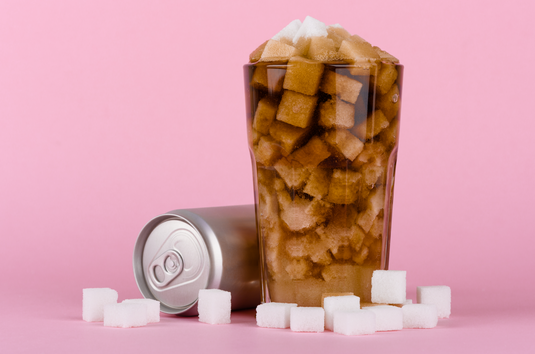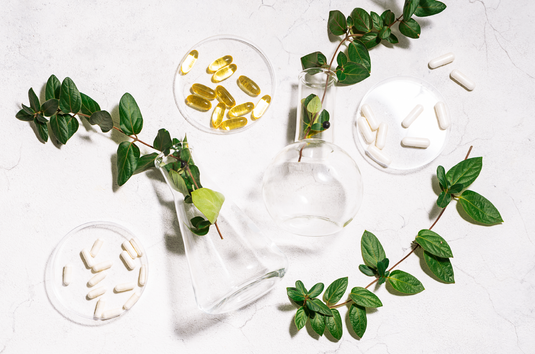Why Gut Health Matters And How To Eat Your Way To A Healthier Gut
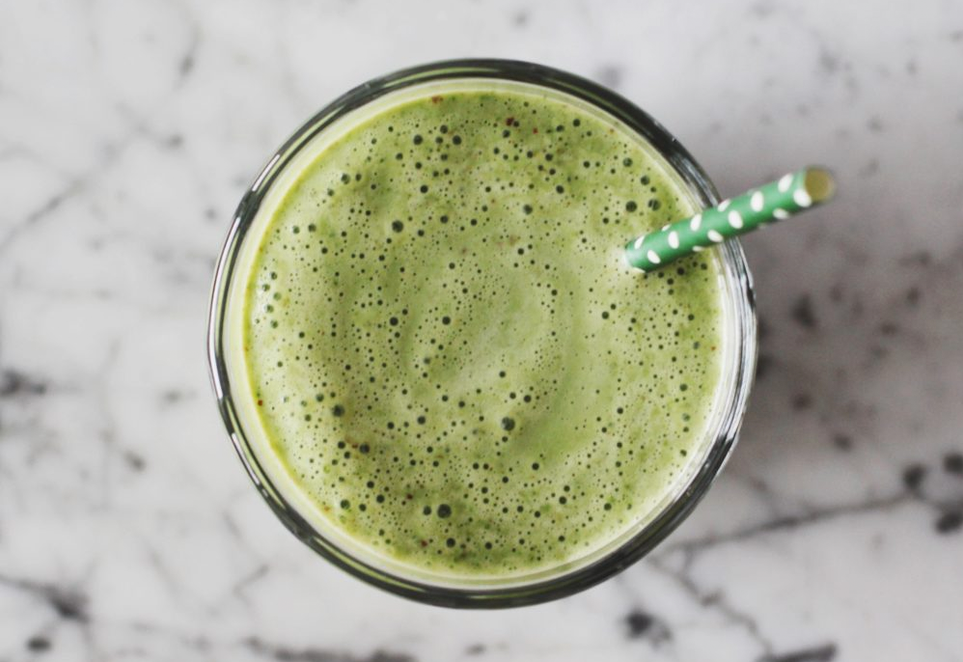
Bugs. You’re filled with them. Yep, that’s right, you have more bacterial cells in and on your body than human cells… ten times more in fact! (bacterial cells are simple and much smaller than complex human cells, just in case your brain hurt when you read that). Though this may all gross you out, the reality is that we NEED these bugs. Bacteria have gotten a bad rap over the years, which has led to a fearful over-sanitized bunch of humans and a whole host of health consequences.
A healthy microbiome (the name for the microorganisms in a given environment, i.e.: the human body) is critical in supporting a strong immune system and digestive tract and may even help achieve weight loss and protect against developing allergies. In fact, the gut is frequently referred to as our ‘second brain’ due to the fact that it has as many neurons connected to it as the spinal cord!
This post will help answer some key questions related to gut health including:
There are two main ways of promoting a healthier gut when it comes to our ‘intake’: ingesting prebiotics (the food for the good bacteria) and/or probiotics (the good bacteria themselves). Let’s start with prebiotics.
Because our microbiota can alter quickly in response to a change in our diet or environment, it’s important that we treat this as a life-long way of living and eating versus a fad (temporary) diet. In order for us to benefit from the improved gut health that comes with eating better foods for our microbiome, we need to make better choices consistently (i.e.: every day).
Our gut bacteria need to be fed, and their favourite food is carbohydrates (yes, the ‘evil’ carb, but read on!). What happens if they don’t get these carbs? Either they die OR they turn to your gut lining (responsible for protecting your gut) to get the food. Crazy but true!
Now, before you go reaching for a cinnamon bun, we need to talk about what types of carbohydrates these bugs really need. A specific type of carbohydrate, complex fermentable starches, are the ones we need to eat. These carbs ferment to produce something called short chain fatty acids, which are made when the healthy gut bacteria ferment fibre in your colon, and are the main source of energy for the cells lining your colon. Short chain fatty acids have anti-inflammatory and anti-cancer properties and might play a key role in the prevention and treatment of the metabolic syndrome, bowel disorders, and certain types of cancer.
Eat a variety of different complex carbohydrates (i.e.: different fruits, vegetables, legumes, whole grains and fermented dairy products) throughout your day, week and month to help feed the various bacteria in your gut and foster diversity in your gut microbiome. Aim for 25-35 grams of fibre a day (you may need to do this gradually, depending on how much fibre you are already eating and how comfortably your body adjusts to the extra fibre).
According to the The World Health Organization’s (WHO) 2001 definition, probiotics are “live micro-organisms which, when administered in adequate amounts, confer a health benefit on the host”. Prebiotics on the other hand are non-digestible food ingredients that selectively stimulate the growth of the beneficial bacteria in our gut. Basically, the prebiotics feed the probiotics. There is evidence that shows that eating prebiotics along with a probiotic source may be the best way to go, which makes sense to me!
The research surrounding the use of probiotics is ongoing, and more studies are looking at which type and amount of a given probiotic is best for the treatment a number of different given conditions. Since our guts are like a finger print in that each of us are completely unique, this is a very complex area to study. I’m of the opinion that there is no downside and every potential upside to nurturing our guts and increasing the ‘good guys’, and a taking good probiotic, combined with a diet filled with gut-healthy fibre, makes sense to me. If you already have a pre-existing health condition such as Crohn’s disease it’s best to discuss the use of a probiotic with your physician first.
There are SO many options out there for probiotics, it’s a confusing space on the store shelf! From the brand, dose, strain and format, it’s enough to make a persons’ head spin!
First, look for a reputable brand that you trust. I’ve worked with Genuine Health for a couple of years, and have had a chance to learn about the scientific approach to the products that they make, which is why I feel good about using their brand. Their new probiotic also happens to be vegan, non-GMO, soy-free and gluten-free.
The advanced gut health probiotic formula combines 15 strains of probiotics carefully selected for their diversity (specific strains are shown to have specific benefits throughout the body), mimicking the balance of the human microbiome. The strains are treated with the utmost care – in a temperature and humidity-controlled environment, and are processed in a way that makes them shelf-stable. A vegan, delayed-release capsule helps ensure that the bacteria pass through the stomach acid to reach the gut where they thrive.
Their probiotics come in two different levels of potency: 15 billion CFU or 50 billion CFU (colony forming units). Genuine Health recommends going with a higher CFU during states of high stress, digestive complaints, or during times when antibiotics are used. Click here to locate a retail location if you are interested in purchasing them!
As a side-note, I got quite sick this winter and had to go on two rounds of antibiotics before getting better (I tried to avoid it, but it was one of those necessary cases). The first round (taken without any probiotics) annihilated my gut leading to a VERY uncomfortable experience…I won’t elaborate, you’re welcome;). My doctor had to put me on an even stronger dose antibiotics when the first round didn’t work, at which time I took the 50 billion CFU Genuine Health Advanced Gut Health Probiotic both before, during and after the round of antibiotics. My gut was perfect, zero side effects. Now, I know this is a study of one (n=1), but consider me sold.
There are some foods that do a better job of feeding our gut than others. In general, aim to include a wide variety of different plant foods in your diet and you’ll hit it out of the park! The following foods are great sources of fermentable prebiotic fibre:
Chicory Root and Jerusalem artichokes are also great sources of prebiotic fibre, but aren’t as easy to source.
A healthy microbiome (the name for the microorganisms in a given environment, i.e.: the human body) is critical in supporting a strong immune system and digestive tract and may even help achieve weight loss and protect against developing allergies. In fact, the gut is frequently referred to as our ‘second brain’ due to the fact that it has as many neurons connected to it as the spinal cord!
This post will help answer some key questions related to gut health including:
- What is the best way to feed your gut?
- What is the difference between a prebiotic and a probiotic?
- What should I look for in a probiotic?
- What foods should I eat to feed the healthy bacteria in my gut?
- What else can I do to improve my gut health?
What is the best way to feed your gut?
There are two main ways of promoting a healthier gut when it comes to our ‘intake’: ingesting prebiotics (the food for the good bacteria) and/or probiotics (the good bacteria themselves). Let’s start with prebiotics.
Because our microbiota can alter quickly in response to a change in our diet or environment, it’s important that we treat this as a life-long way of living and eating versus a fad (temporary) diet. In order for us to benefit from the improved gut health that comes with eating better foods for our microbiome, we need to make better choices consistently (i.e.: every day).
Our gut bacteria need to be fed, and their favourite food is carbohydrates (yes, the ‘evil’ carb, but read on!). What happens if they don’t get these carbs? Either they die OR they turn to your gut lining (responsible for protecting your gut) to get the food. Crazy but true!
Now, before you go reaching for a cinnamon bun, we need to talk about what types of carbohydrates these bugs really need. A specific type of carbohydrate, complex fermentable starches, are the ones we need to eat. These carbs ferment to produce something called short chain fatty acids, which are made when the healthy gut bacteria ferment fibre in your colon, and are the main source of energy for the cells lining your colon. Short chain fatty acids have anti-inflammatory and anti-cancer properties and might play a key role in the prevention and treatment of the metabolic syndrome, bowel disorders, and certain types of cancer.
Eat a variety of different complex carbohydrates (i.e.: different fruits, vegetables, legumes, whole grains and fermented dairy products) throughout your day, week and month to help feed the various bacteria in your gut and foster diversity in your gut microbiome. Aim for 25-35 grams of fibre a day (you may need to do this gradually, depending on how much fibre you are already eating and how comfortably your body adjusts to the extra fibre).
What is the difference between a prebiotic and a probiotic?
According to the The World Health Organization’s (WHO) 2001 definition, probiotics are “live micro-organisms which, when administered in adequate amounts, confer a health benefit on the host”. Prebiotics on the other hand are non-digestible food ingredients that selectively stimulate the growth of the beneficial bacteria in our gut. Basically, the prebiotics feed the probiotics. There is evidence that shows that eating prebiotics along with a probiotic source may be the best way to go, which makes sense to me!
The research surrounding the use of probiotics is ongoing, and more studies are looking at which type and amount of a given probiotic is best for the treatment a number of different given conditions. Since our guts are like a finger print in that each of us are completely unique, this is a very complex area to study. I’m of the opinion that there is no downside and every potential upside to nurturing our guts and increasing the ‘good guys’, and a taking good probiotic, combined with a diet filled with gut-healthy fibre, makes sense to me. If you already have a pre-existing health condition such as Crohn’s disease it’s best to discuss the use of a probiotic with your physician first.
What should I look for in a probiotic?
There are SO many options out there for probiotics, it’s a confusing space on the store shelf! From the brand, dose, strain and format, it’s enough to make a persons’ head spin!
First, look for a reputable brand that you trust. I’ve worked with Genuine Health for a couple of years, and have had a chance to learn about the scientific approach to the products that they make, which is why I feel good about using their brand. Their new probiotic also happens to be vegan, non-GMO, soy-free and gluten-free.
The advanced gut health probiotic formula combines 15 strains of probiotics carefully selected for their diversity (specific strains are shown to have specific benefits throughout the body), mimicking the balance of the human microbiome. The strains are treated with the utmost care – in a temperature and humidity-controlled environment, and are processed in a way that makes them shelf-stable. A vegan, delayed-release capsule helps ensure that the bacteria pass through the stomach acid to reach the gut where they thrive.
Their probiotics come in two different levels of potency: 15 billion CFU or 50 billion CFU (colony forming units). Genuine Health recommends going with a higher CFU during states of high stress, digestive complaints, or during times when antibiotics are used. Click here to locate a retail location if you are interested in purchasing them!
As a side-note, I got quite sick this winter and had to go on two rounds of antibiotics before getting better (I tried to avoid it, but it was one of those necessary cases). The first round (taken without any probiotics) annihilated my gut leading to a VERY uncomfortable experience…I won’t elaborate, you’re welcome;). My doctor had to put me on an even stronger dose antibiotics when the first round didn’t work, at which time I took the 50 billion CFU Genuine Health Advanced Gut Health Probiotic both before, during and after the round of antibiotics. My gut was perfect, zero side effects. Now, I know this is a study of one (n=1), but consider me sold.
What foods should I eat to feed the healthy bacteria in my gut?
There are some foods that do a better job of feeding our gut than others. In general, aim to include a wide variety of different plant foods in your diet and you’ll hit it out of the park! The following foods are great sources of fermentable prebiotic fibre:
- Bananas
- Beans and lentils
- Fermented protein powders
- Fermented foods (i.e.: Kimchi and sauerkraut), kombucha and miso
- Oats and barley
- Kefir and yogurt
- Onions and leeks
- Garlic
- Apples
- Asparagus
Chicory Root and Jerusalem artichokes are also great sources of prebiotic fibre, but aren’t as easy to source.
What else can I do to improve my gut health?
- Start young. Studies show that having a baby via a vaginal delivery is the best way to help your baby get a strong start towards a healthy gut by exposing him or her to the mom’s bacteria during the delivery process (our guts start off as ‘clean’, so this initial exposure helps babies develop their own healthy bacteria or ‘starter microbes’ from birth). Breastfeeding is another way to encourage a healthy infant gut: breastmilk is a microbiota superfood!
- Expose yourself to different environments. Literally expose yourself to a variety of environments, including animal/pet exposure (children raised on farms are less likely to have allergies) and gardens (what a great way to connect with your children and teach them about food!). Travel around where possible to expose your gut to new ‘friends’.
- Don’t be a clean freak. There is something called the hygiene hypothesis, which states that a lack of early childhood exposure to bacteria or germs germs does not give the immune system a chance to develop resistance to diseases and suppresses the natural immune system. Routine use of antibiotic soaps and hand sanitizers may not be the best thing after all! Reduce the use antibacterial cleaners in the house and use natural cleaners where possible (lemon juice, baking soda and vinegar for example).
- Lay off the antibiotics unless necessary. Antibiotics discriminate to varying degrees between good and bad bacteria (depending on the spectrum), producing collateral damage in their wake. There is a time and a place for antibiotic use, which should be reserved for when they are truly needed. Talk to your physician about any concerns you may have.
- Rest up and chill out. A lack of sleep and stress both reduce the gut flora. Just another reason among the heaps of others to catch your zz’s!
